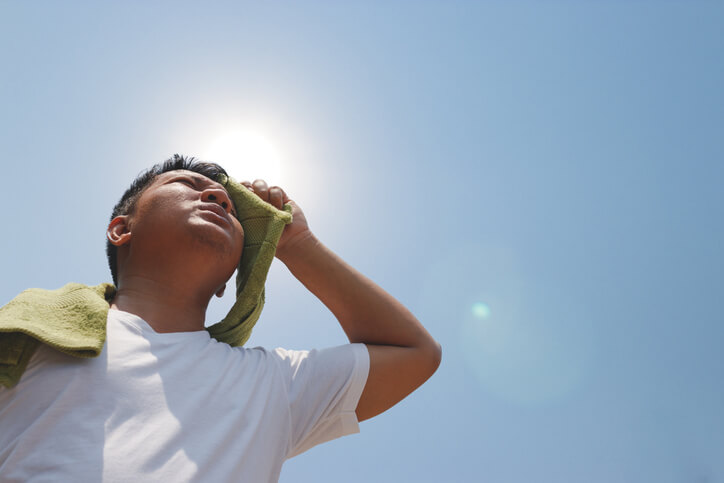
Extreme heat is the leading cause of natural disaster-related deaths and injuries in the United States. Between 1999-2010, more than 8,000 Americans died of heat-related injuries, and thousands more visited emergency rooms. As summer temperatures soar to record highs, first responders must be prepared to respond to heat stroke and similar symptoms.
Risk Factors for Heat Stroke
Anyone exposed to prolonged heat can develop a heat-related illness, but children under 4 years old, seniors over the age of 65, people with a prior history of heat exhaustion, and those with respiratory disorders are especially vulnerable. Heat-related illness increases in very high heat, especially between the hours of 10 a.m. and 2 p.m., when the sun is the hottest. People involved in intense outdoor activity—athletes, musicians, and people who have walked long distances—are also vulnerable, especially if they don’t drink enough water.
Certain drugs and medications may also increase the risk of developing heat stroke. They include:
- Alcohol.
- Beta blockers.
- Benzodiazepines.
- Cocaine.
- Diuretics.
- Laxatives.
- Tricyclic antidepressants.
Signs and Symptoms of Heat Stroke
Heat-related illnesses exist on a continuum. The earliest signs of heat exhaustion include dizziness, intense thirst, and exhaustion. They can often be managed with rest, cool temperatures, and hydration. As symptoms progress, however, they typically require medical management. Heat stroke is the most serious form of heat-related illness, and causes the following symptoms:
- Hot, red, dry skin.
- Intense, painful headache.
- Confusion.
- Changes in mood or personality.
- Fainting.
- Vomiting.
- Racing heart rate.
- Temperature above 104 degrees Fahrenheit.
- Appearing drunk—slurred speech, difficulty focusing, and so on.
- Seizures.
Heat Stroke Treatment and Management
Not all patients experiencing exhaustion in the heat are suffering from heat stroke. If a patient’s symptoms are mild, simply remove them from the heat, cool them, and give them water. If symptoms resolve within 30 minutes, encourage them to remain out of the heat. They may not warrant transport. However, if symptoms are more severe or get worse, treat the symptoms as a medical emergency.
Heat stroke is the most severe form of heat-related illness, and it warrants prompt treatment. When a patient presents with symptoms of heat stroke, try the following:
- Monitor the ABCs—airway, breathing, and circulation—for signs of distress. If the patient has difficulty breathing, they may require mechanical ventilation. Patients with preexisting respiratory disorders may have trouble clearing the airway and require suctioning.
- Give the patient oxygen if they have trouble breathing or a rapid heart rate.
- Remove the patient from the heat to the greatest possible extent. Cool their body temperature to 100.4 degrees Fahrenheit or lower using cool compresses, fans, or air conditioning.
- Give the patient water or IV fluids.
When cooling the patient, avoid overcooling, which can initiate shivering and other responses that compound the problem. After the patient is stabilized or begins cooling, transport them to the hospital. True heat stroke warrants additional monitoring, including assessing for signs of renal failure, measuring electrolyte levels, and performing lab tests to assess for conditions that may compound heat stroke.
Heat-related injuries can cause a patient to lose consciousness, leading to respiratory issues. Protecting the airway is critical in these emergencies. A portable emergency suction device allows you to tend to patients at the most common heat stroke sites—pools, large outdoor events, the beach, and other crowded areas. Don’t waste time transporting the patient back to the ambulance. Invest in a machine that you can easily take patient-side.
For help choosing the right portable emergency suction machine for your agency, download our free guide, The Ultimate Guide to Purchasing a Portable Emergency Suction Device.














